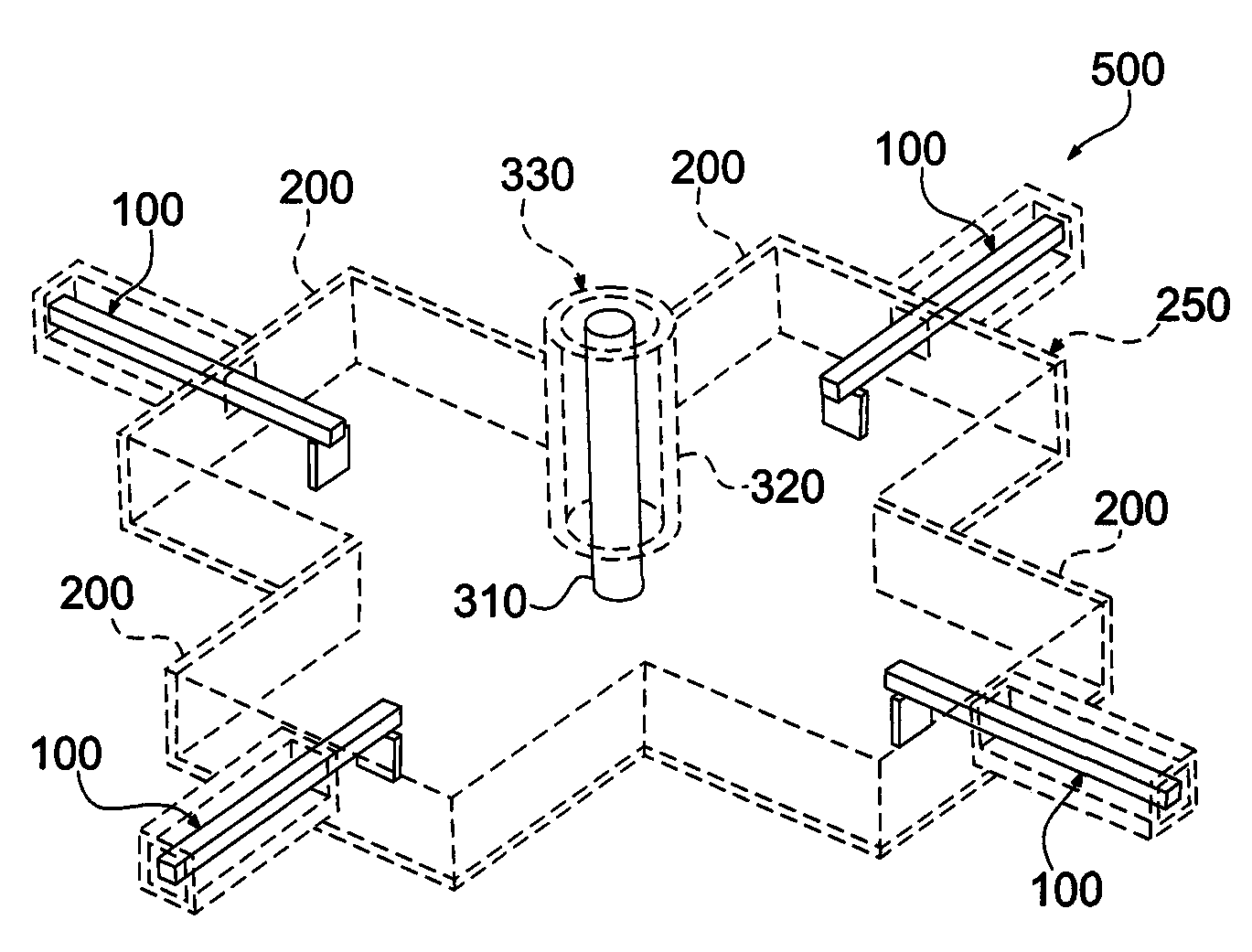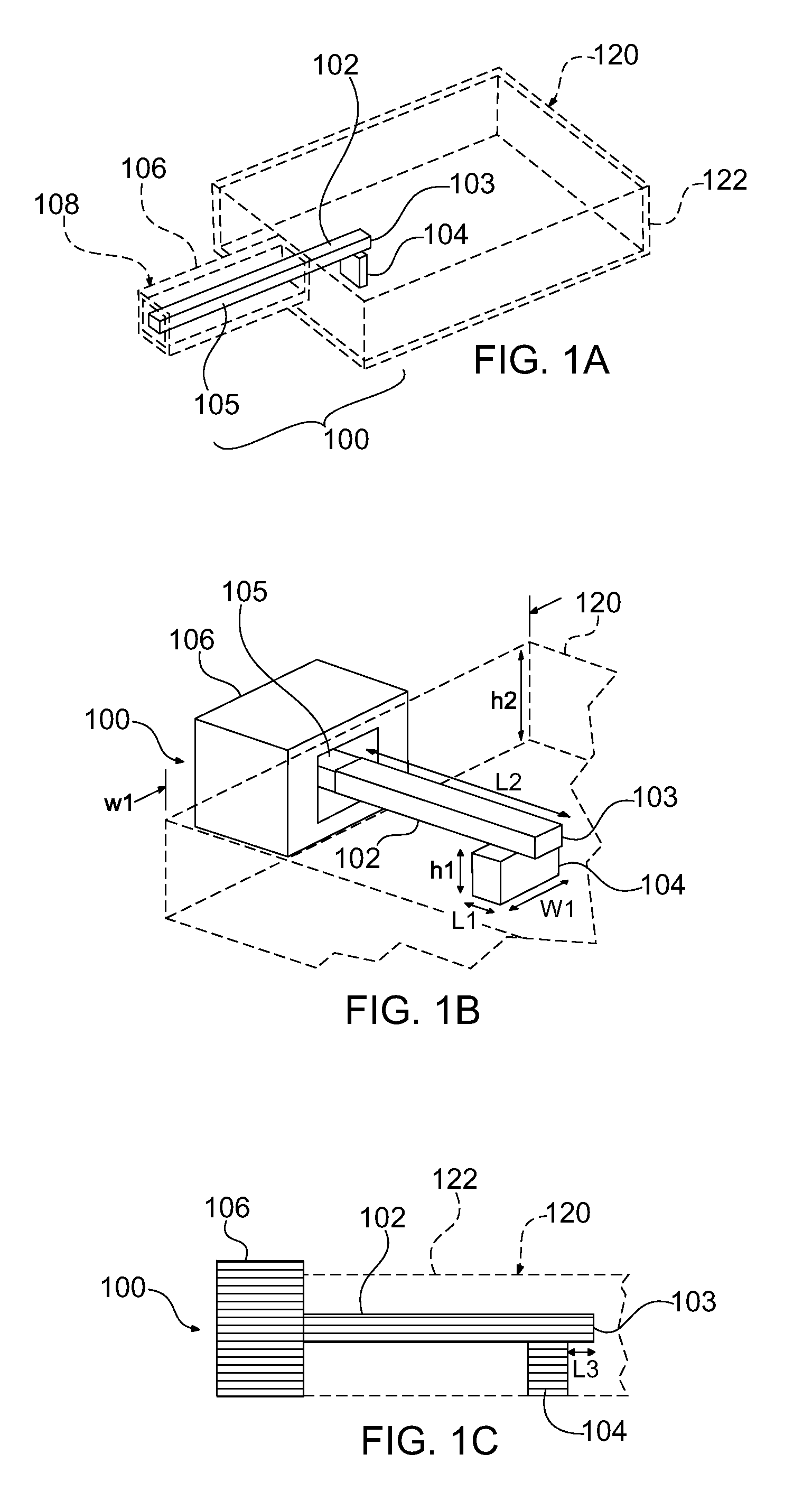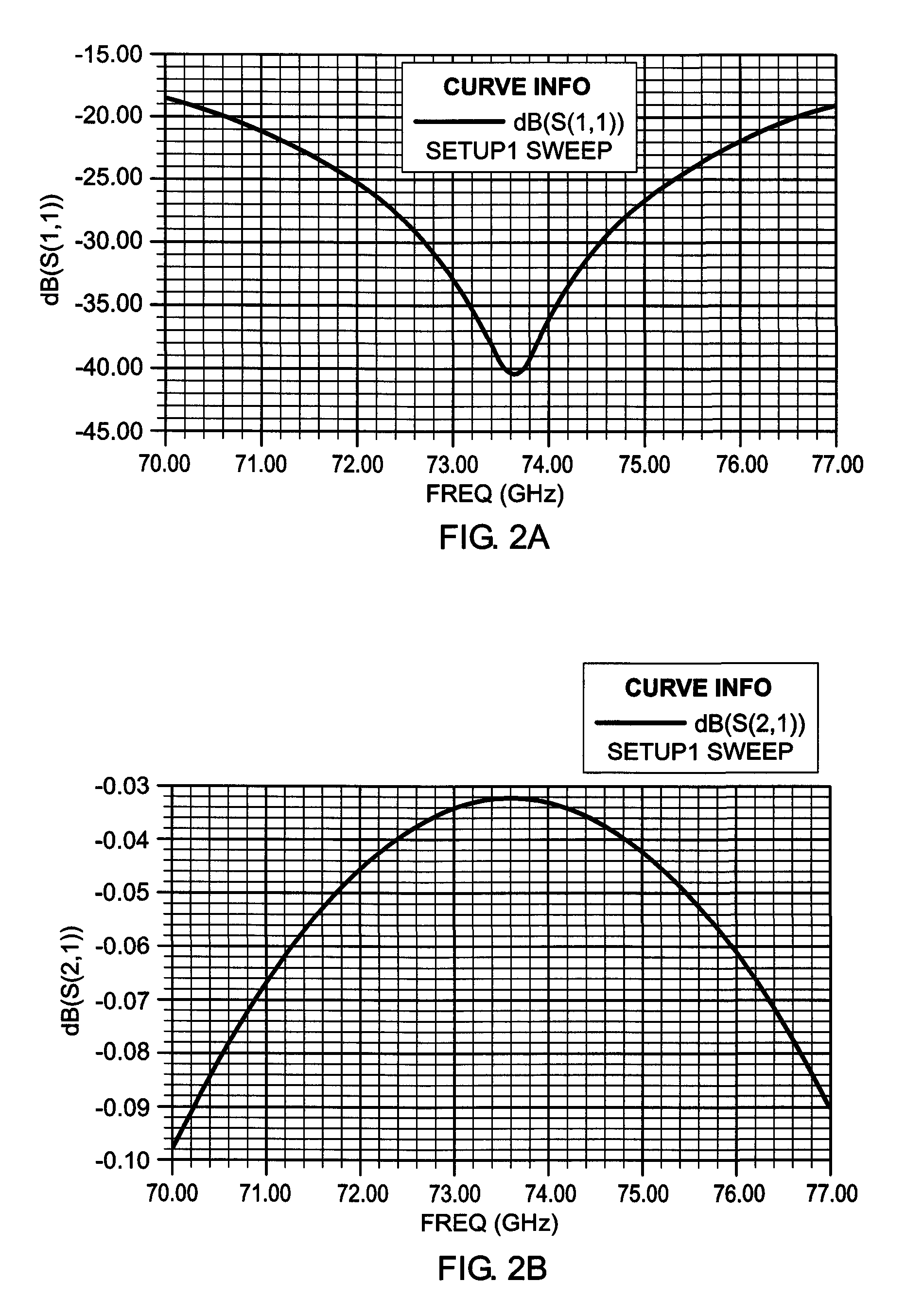High frequency power combiner/divider
a high-frequency power combiner and divider technology, applied in the direction of amplifiers, waveguides, amplifiers with semiconductor devices/discharge tubes, etc., can solve the problems of high voltage risk, large drawbacks of twt amplifiers, and large size and weight, so as to improve overall sspa and reduce height , the effect of high isolation
- Summary
- Abstract
- Description
- Claims
- Application Information
AI Technical Summary
Benefits of technology
Problems solved by technology
Method used
Image
Examples
Embodiment Construction
[0040]In view of the aforementioned needs in the art, in one of its aspects the present invention provides waveguide power combiner / dividers which are designed with the recognition that RF power can be more efficiently combined / divided when the power is contained in radiation modes of hollow waveguides rather than in RF signals in transmission lines. (As used throughout this disclosure, the term “combiner / divider” is used to refer to a device having a structure which can either combine or divide RF power, depending on how the device is incorporated in an overall system architecture. For example, if a combiner / divider includes N ports at a first end and a single port at a second end, the combiner / divider may function as a divider if an input signal is provided to the single port and divided output signals delivered to the N ports; conversely, the combiner / divider may function as a combiner if input signals are provided to the N ports and a combined signal is output from the single po...
PUM
 Login to View More
Login to View More Abstract
Description
Claims
Application Information
 Login to View More
Login to View More - R&D
- Intellectual Property
- Life Sciences
- Materials
- Tech Scout
- Unparalleled Data Quality
- Higher Quality Content
- 60% Fewer Hallucinations
Browse by: Latest US Patents, China's latest patents, Technical Efficacy Thesaurus, Application Domain, Technology Topic, Popular Technical Reports.
© 2025 PatSnap. All rights reserved.Legal|Privacy policy|Modern Slavery Act Transparency Statement|Sitemap|About US| Contact US: help@patsnap.com



